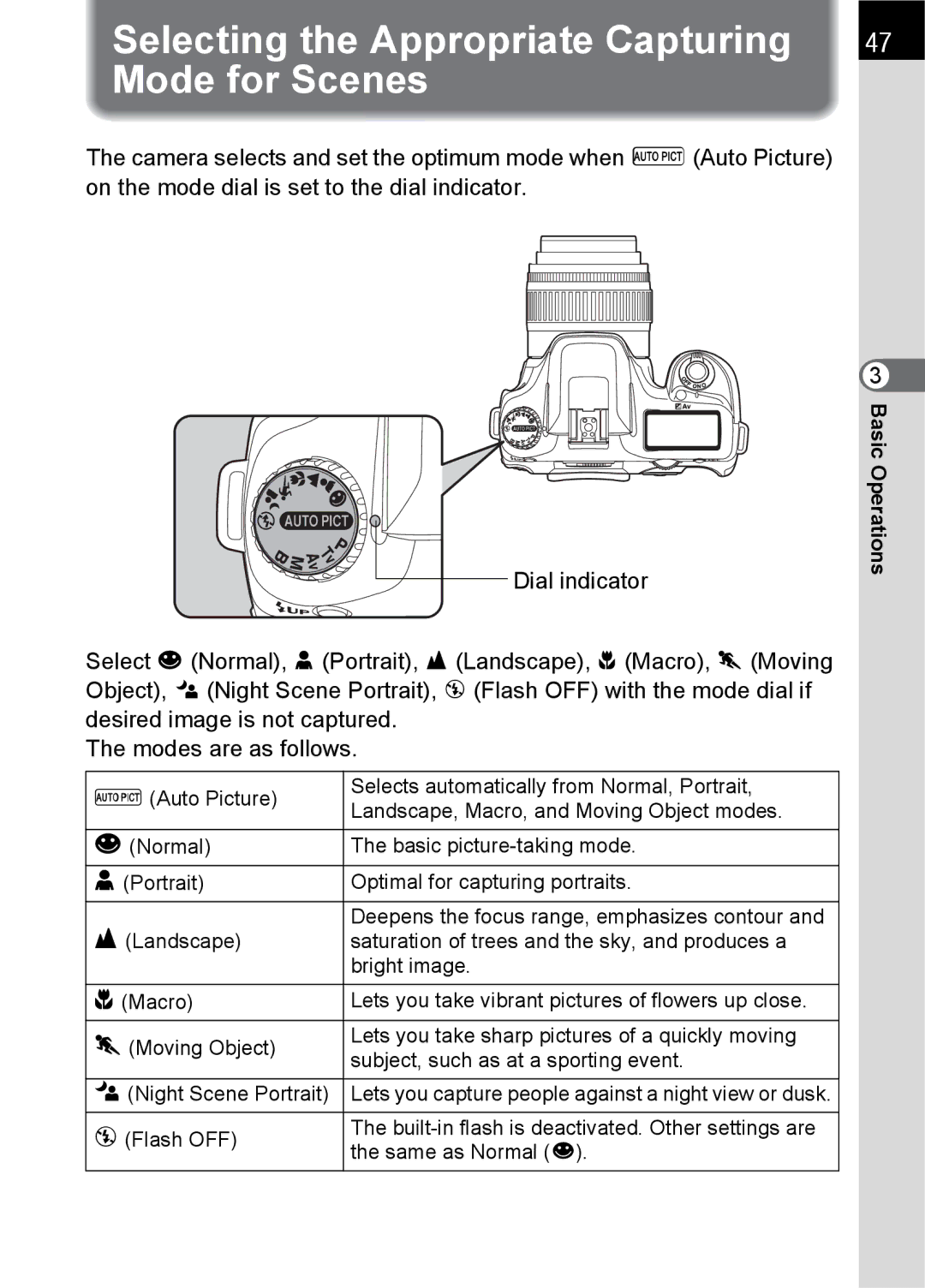
Selecting the Appropriate Capturing | 47 |
Mode for Scenes |
|
The camera selects and set the optimum mode when I(Auto Picture) on the mode dial is set to the dial indicator.
Dial indicator
Select U(Normal), = (Portrait), s (Landscape), q (Macro), \(Moving Object), . (Night Scene Portrait), a (Flash OFF) with the mode dial if desired image is not captured.
The modes are as follows.
I(Auto Picture) | Selects automatically from Normal, Portrait, | |
Landscape, Macro, and Moving Object modes. | ||
| ||
|
| |
U(Normal) | The basic | |
|
| |
=(Portrait) | Optimal for capturing portraits. | |
|
| |
s(Landscape) | Deepens the focus range, emphasizes contour and | |
saturation of trees and the sky, and produces a | ||
| bright image. | |
|
| |
q(Macro) | Lets you take vibrant pictures of flowers up close. | |
|
| |
\(Moving Object) | Lets you take sharp pictures of a quickly moving | |
subject, such as at a sporting event. | ||
| ||
|
| |
.(Night Scene Portrait) | Lets you capture people against a night view or dusk. | |
|
| |
a(Flash OFF) | The | |
the same as Normal (U). | ||
| ||
|
|
3 BasicOperations
